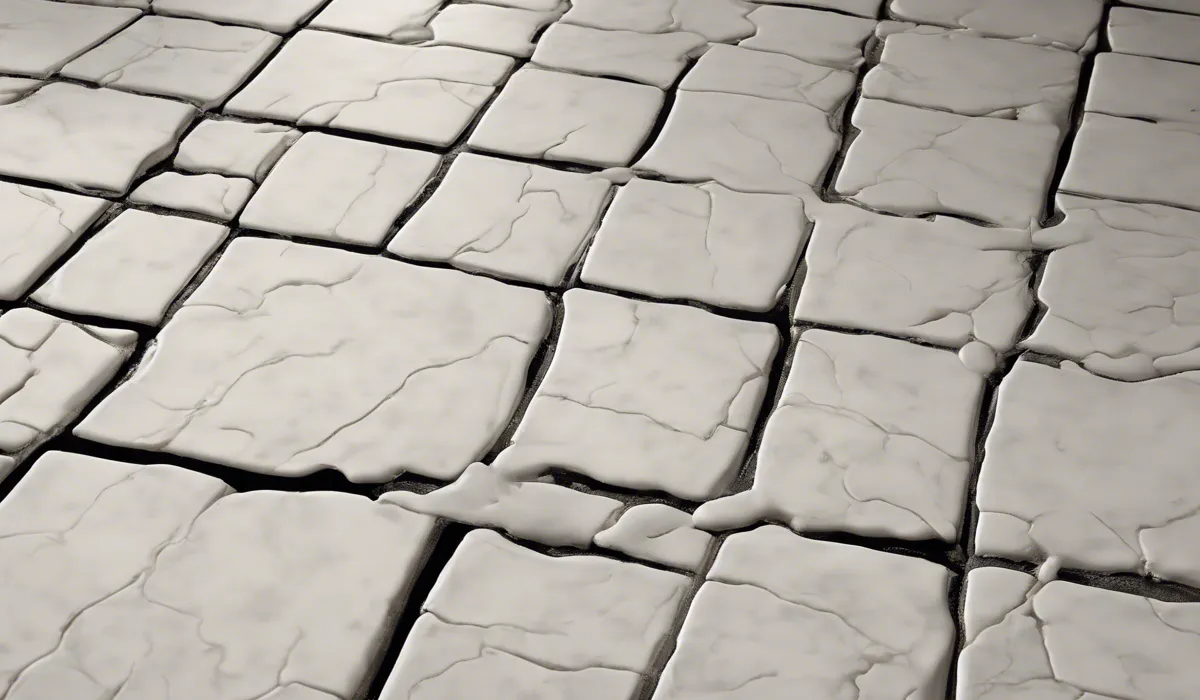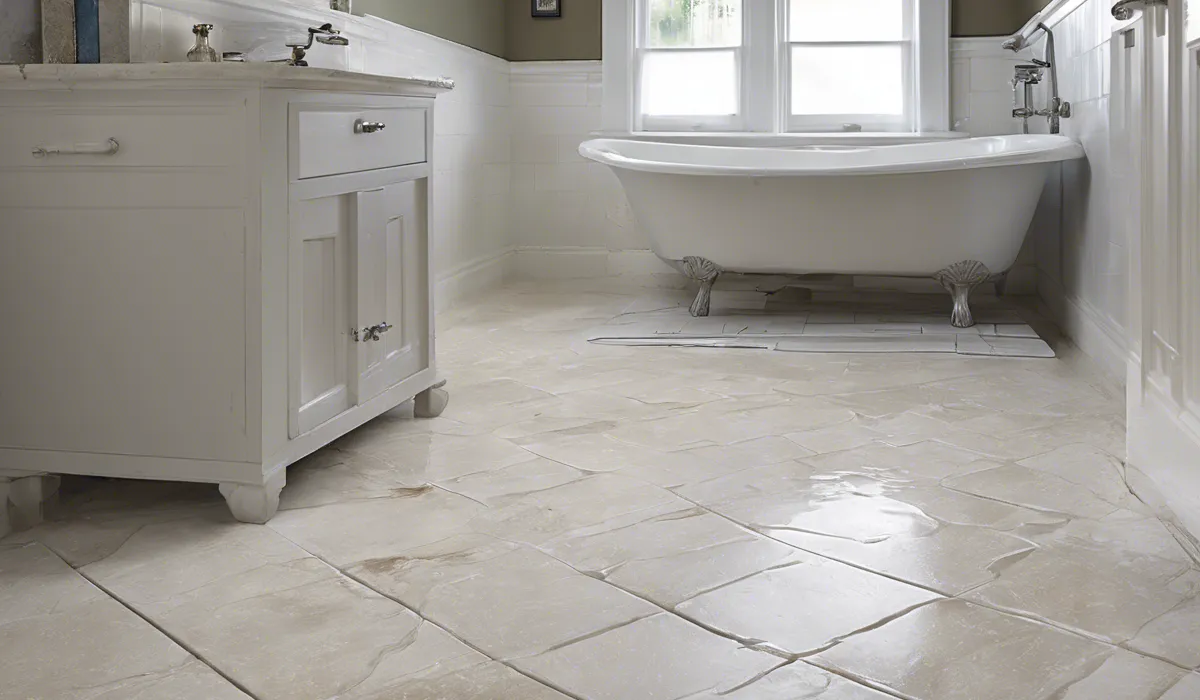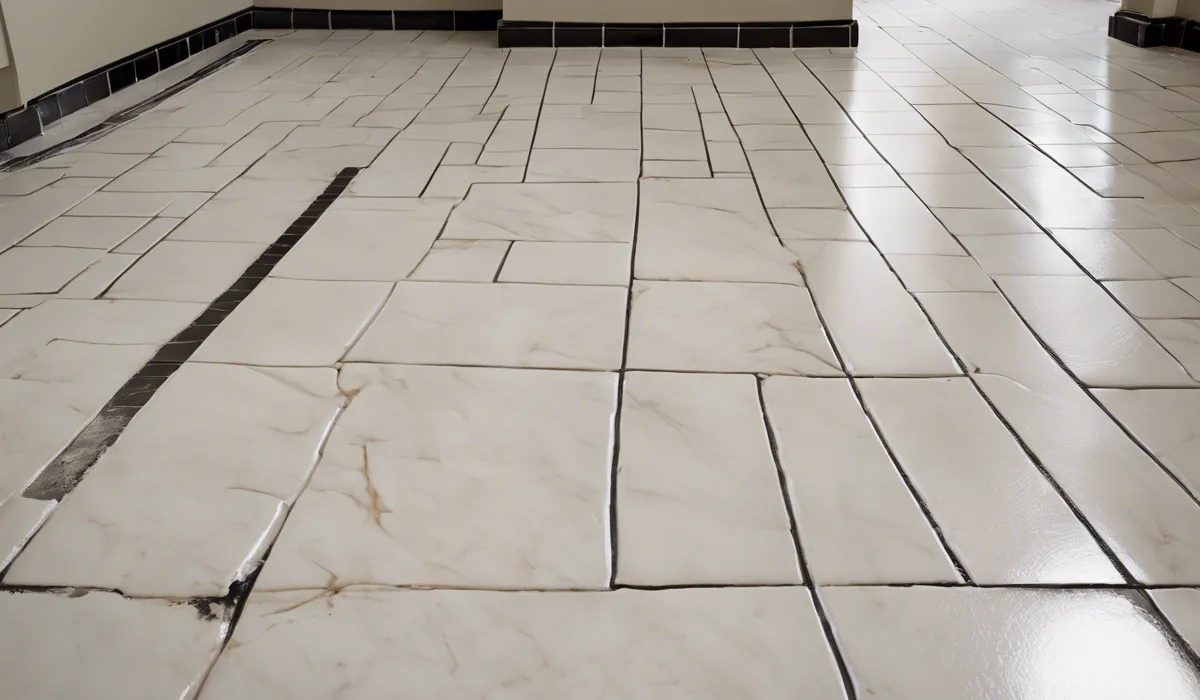Yes, grout sealer can help prevent mold by creating a barrier that resists moisture penetration. It’s not mold-proof, but it significantly lowers mold growth risk on grout lines in damp areas. Regular reapplication is necessary to maintain effectiveness.
Mold in Grout and How Grout Sealers Work

Conditions That Favor Mold Growth
Mold thrives in environments where warmth, moisture, and organic materials are abundant.
Bathrooms and kitchens are often the perfect breeding grounds due to the high humidity levels and temperatures that mold spores favor.
When these conditions persist, mold can easily take hold, especially in porous materials where it can feed on microscopic organic matter.
Grout’s Vulnerability to Mold
Grout, typically found between tiles, is a mixture of water, cement, and sand, which makes it porous and susceptible to moisture retention.
Once moisture seeps into the grout, it becomes a hotspot for mold growth, which not only looks unsightly but can also lead to health issues and structural damage over time.
Understanding Grout Sealers
Grout sealers come in two main types: penetrating and membrane-forming. Penetrating sealers soak into the grout, creating a protective barrier within, while membrane-forming sealers create a surface barrier that prevents moisture from entering the grout.
Each type has its own application methods and benefits, depending on the area being treated.
Protection Against Moisture
By applying a grout sealer, you can significantly reduce the amount of moisture that penetrates the grout.
This barrier limits the conditions mold needs to grow, thereby protecting the grout from becoming a mold habitat.
However, it is important to note that sealers are not a permanent solution and require regular maintenance.
Effectiveness of Grout Sealer

Key Factors in Sealer Performance
The effectiveness of a grout sealer is influenced by how well it is applied and the environmental conditions it faces.
Sealers need to be applied correctly to cover the entire grout line, and the area must be kept dry for the sealer to cure properly.
In high-moisture environments, the sealer’s performance can be compromised over time.
Research on Mold Resistance
Various studies have indicated that the use of grout sealers can lead to a noticeable reduction in mold growth.
By impeding the ingress of moisture, these sealers deprive mold spores of one of their essential growth factors.
While not entirely mold-proof, sealed grout is more resistant to mold than untreated grout.
Treated vs. Untreated Grout
Comparing areas where grout has been sealed with those where it hasn’t clearly shows the benefits of using a sealer.
In damp areas like showers or backsplashes, treated grout remains cleaner and free of mold for longer periods, while untreated grout often shows signs of mold growth much sooner.
Sealer Limitations
Despite their protective benefits, grout sealers are not infallible. They can wear down over time and with frequent cleaning.
When the sealer’s effectiveness diminishes, moisture can begin to penetrate the grout again, creating the potential for mold to grow.
Regular inspections and maintenance are crucial to ensure ongoing mold prevention.
Best Practices for Mold Prevention

Sealer Application Techniques
For the best protection, grout sealer should be applied evenly and thoroughly. The area must be clean and dry before application, and enough time must be allowed for the sealer to cure.
Following the manufacturer’s instructions is crucial for ensuring that the sealer adheres properly and provides effective mold resistance.
Cleaning and Maintenance
Regular cleaning is essential to prevent mold from gaining a foothold in grout lines. This means wiping down surfaces to remove moisture and cleaning with appropriate products that won’t degrade the sealer.
Keeping the area well-ventilated will also help to reduce humidity and further discourage mold growth.
Reapplication Frequency
Over time, the effectiveness of grout sealer diminishes. It’s recommended to reapply sealer at least once a year, but this can vary based on the level of wear and tear.
High traffic areas or those with constant exposure to water may require more frequent reapplication to maintain mold resistance.
Additional Mold Prevention Steps
Alongside sealing, other steps can be taken to prevent mold growth in tiled areas. Ensuring proper ventilation, using a squeegee after showers, and addressing any leaks promptly will all help keep the environment less hospitable to mold.
Choosing mold-resistant grout and sealers can also provide added protection.
FAQs About Grout Sealer and Mold Prevention
Does applying grout sealer prevent mold growth?
Applying grout sealer can help prevent mold growth by creating a moisture-resistant barrier, although it does not make grout completely mold-proof.
Is grout sealer completely mold-proof?
No, grout sealer is not completely mold-proof but significantly reduces the risk of mold growth in damp areas.
How often should grout sealer be reapplied to prevent mold?
Regular reapplication of grout sealer is necessary to maintain its effectiveness against mold, typically every one to two years, depending on the product and conditions.
Can grout sealer be used in any area to prevent mold?
Grout sealer is best used in damp areas where mold is more likely to grow, such as bathrooms and kitchens.
Is grout sealer the only way to prevent mold on grout lines?
No, grout sealer is not the only method to prevent mold; maintaining a dry and well-ventilated area is also crucial in preventing mold growth on grout lines.
Final Thoughts
Grout sealer serves as a moisture-resistant barrier, significantly reducing the risk of mold growth in grout lines, particularly in moist environments.
While not completely mold-proof, its application is a proactive measure to combat mold. To ensure continued effectiveness, the sealer must be reapplied regularly as part of routine maintenance.
Useful Resources
- https://www.cpsc.gov/Recalls/2005/cpsc-tile-perfect-inc-announce-recall-of-standn-seal-grout-sealer-due-to-respiratory
- https://ecology.wa.gov/getattachment/a10d5ef3-1d08-4e3f-b7d8-4346e7ff6fa5/0424-WA-ADA-brands.pdf
- https://www.nyc.gov/assets/hpd/downloads/pdfs/services/aging-in-place-specifications.pdf
